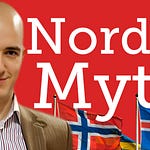In this Institute of Economic Affairs podcast, Daniel Freeman interviews Professor Bas van Bavel, a distinguished professor at the University of Utrecht and author of “The Invisible Hand: How Market Economies Have Emerged and Declined Since 500 A.D.” The conversation examines how market economies emerged in medieval Europe, why some regions developed competitive markets for land, labour and capital while others did not, and what caused Europe to pull ahead of the Middle East economically during this period. Professor van Bavel explains the crucial distinction between output markets and input markets, arguing that true market economies only emerge when there are functioning markets for the factors of production.
The discussion traces how northern Italy first developed input markets in the 10th and 11th centuries as ordinary people organised themselves to break aristocratic power, followed by similar developments in the Low Countries. They explore why urbanisation alone wasn’t decisive for market development, how security of property rights encouraged investment in expensive capital goods like mills, and the role of associational organisations in medieval European economic growth. The conversation also covers why the Islamic world, despite having advanced markets in early medieval Iraq, failed to maintain this advantage.
The interview concludes with Professor van Bavel’s analysis of how market economies tend to decline through a self-reinforcing process of wealth accumulation. He argues that wealthy elites use economic leverage to dominate markets, control states through financial means, and eventually reshape market rules to serve their interests. This pattern, he suggests, can be observed across multiple historical market economies from medieval Italy and the Low Countries to modern America. They debate whether this process is inevitable, how Britain’s relatively oligarchical 18th century led to the Industrial Revolution, and whether contemporary sclerosis in growth stems from elite capture or other factors like housing constraints.











